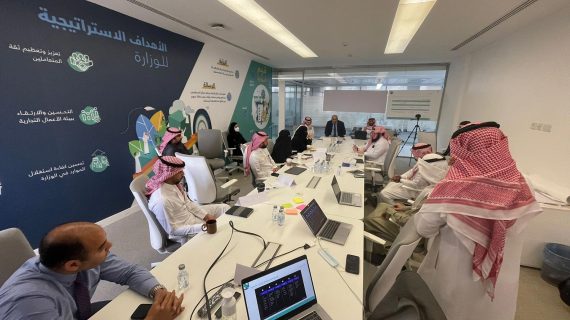Established 1990
+966112495943
Email: info@arrowad.sa
Arrowad International Group
P.O.Box 90987, Uthman Ibn Affan, AtTaawn, Riyadh 11623, KSA
- Examining the organization's charter and strategy, as well as its current performance, using the Hansei process.
- Establishing a mission control center, selecting ambassadors of excellence, organizing teams, establishing a robust communication and change plan, and planning upcoming activities.
- Identifying current methodologies in the four dimension of excellence (corporate culture, continuous process improvement, organizational alignment, and maximizing results).
- Examining strategic opportunities and options resulted from the application of the strategic processes (market analysis, change forces, innovation, operational excellence, etc.)
- Verifying data: SWOT analysis, gap analysis, and stakeholder requirements analysis.
- Defining what the organization will look-like when its strategy is successful, identifying the strategic initiatives, options, critical issues, success factors, competitive advantages, and the organization’s ecosystem.
- Analyzing key value streams and deriving breakthrough targets.
- Determining the future vision and drawing visual maps showing areas of possible improvement.
- Defining improvement priorities that ensure steady progress towards achieving the future vision, and preparing the Hoshin matrices, plans and implementation structure.
- Preparing and publishing Hoshin matrices and execution plans down to action points using a catchball process.
- Organizing kaizen events to prepare visual maps in the mission control center in preparation for implementation.
- Dividing the breakthrough goals into annual goals and then cascading into lower-level Hoshin matrices.
- Developing the maturity assessment framework based on the best practices in the scope of the project (eg: EFQM, KAQA, ISO, eGDI, etc.)
- Designing the first version of the Sustainability Program.
- Arranging improvements priorities into cycles that are carried out consecutively.
- Applying the Maturity Assessment Framework in the areas of institutional excellence at the end of each cycle.
- Reviewing results of the current improvement cycle to analyze incomplete objectives.
- Improvement cycle are carried out with the assistance of excellence ambassadors who serve as shadow consultants.
- Full deplyment: Building the capacity of the excellence ambassadors to participate in the implementation independently at the enterprise level.
- Using the Maturity Assessment Framework to depict a full picture on the maturity of corporates culture of excellence.
- Improving the sustainability program based on the results of the current improvement cycle.
- Reviewing improvement priorities and deployment roadmaps for the upcoming improvement cycles.
- Developing an audit system to test objectives, risks, counter-measures and corrective actions on a regular basis.
- Developing the deployment follow-up structure: A standard methodology in measuring the organization's success in achieving the objectives of action plans and corrective actions.
- Preparing the final version of the sustainability program, laying the foundations for running the program in order to sustain progress towards achieving the future vision.
- Verifying the validity of the results by using reliable methods for determining causes of poor results and in examining the processes that lead to these results.
- Creating a foundation for change and continuous improvement by applying the D3 Change Model as a base to achieve results.
- Building capacities of local teams in topics of planning, implementation, institutional excellence, continuous improvement, and working the kaizen way, using the final version of the sustainability program.
SAMPLES OF OUR PROJECTS
Arrowad System for Institutional Excellence (ASIX™), is a proven methodology in numerous organizations in the public, private and the not-profit sectors. See samples of our projects.



